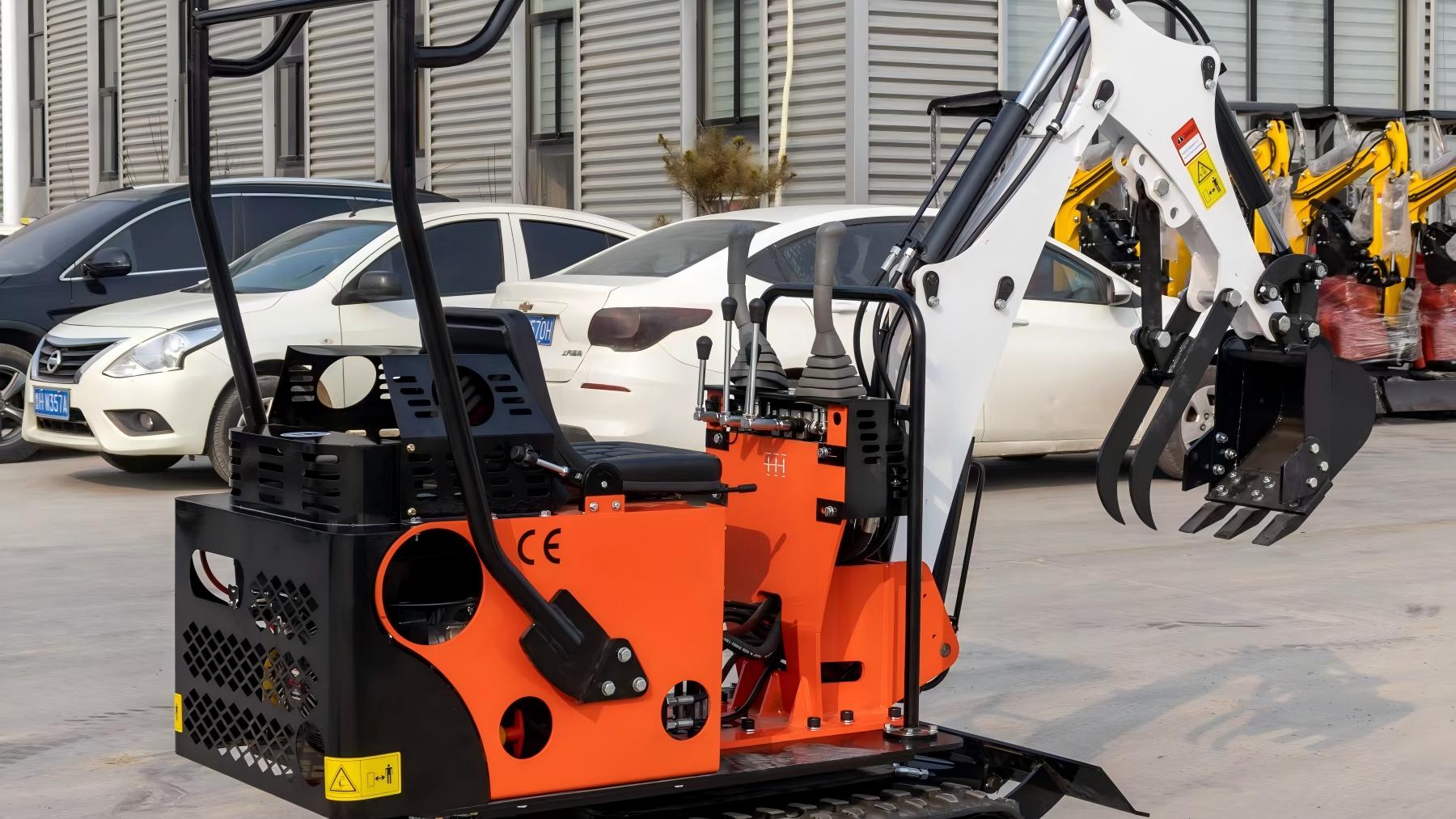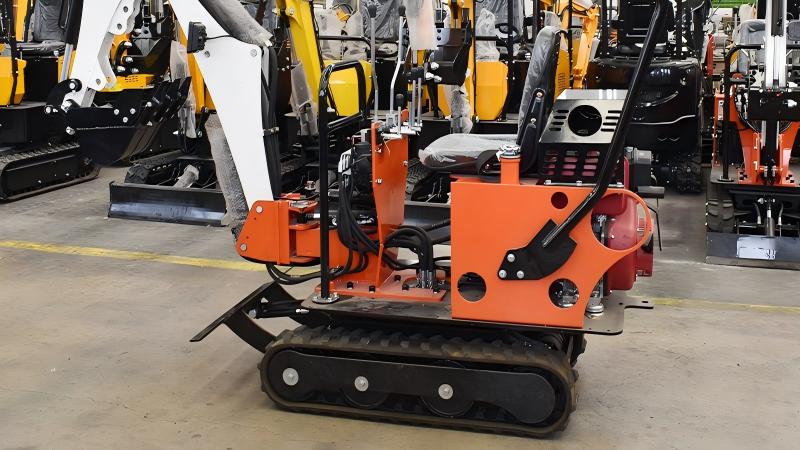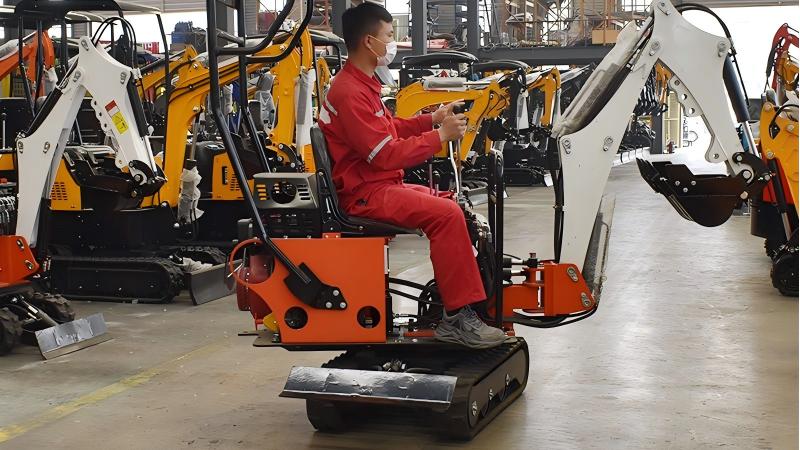Mini excavators are compact, versatile machines widely used in construction, landscaping, utilities, and other industries where space constraints and maneuverability are critical. While their primary function is digging and earthmoving, mini excavators also frequently serve as lifting devices for materials like pipes, pallets, and building components. Understanding their lifting capacity is essential for safe operation, optimal productivity, and proper machine selection.
In this article, we will explore what determines the lifting capacity of a mini excavator, how it is measured, typical values across different models, factors influencing lifting performance, and safety considerations.
Understanding Lifting Capacity
The lifting capacity of a mini excavator refers to the maximum weight the machine can safely lift and hold with its boom, arm, and bucket (or other attachments) without tipping or causing structural damage.
Unlike dedicated cranes or forklifts, mini excavators are primarily designed for digging. Lifting heavy loads is a secondary function, which means their lifting capacity is limited and varies widely depending on:
The machine's operating weight
Boom and arm length
Hydraulic system strength
Counterweight and stability of the undercarriage
Boom position and lifting radius
Because of these variables, manufacturers provide detailed lifting charts in the operator manuals that specify the safe lifting loads at various boom angles and distances.
How Is Lifting Capacity Measured?
Lifting capacity is usually measured at specific positions of the boom and arm. The main parameters include:
Lift point distance from the center of rotation (swing center): The farther the load is from the machine’s pivot point, the lower the lifting capacity.
Lift height: The vertical height at which the load is held.
Boom and arm configuration: Positions of the boom and arm impact leverage and stability.
Lifting capacities are often given as:
Maximum lift at a fixed radius: For example, “500 kg at 2 meters radius.”
Maximum lift at a fixed height: Such as “300 kg at 3 meters high.”
These values assume the load is centered and that the machine is on firm, level ground.
Factors Influencing Lifting Capacity
Machine Stability and Counterweights
A mini excavator’s lifting capacity is fundamentally tied to its stability. The more stable the machine, the heavier the load it can safely lift.
Counterweights: Added weights on the rear of the excavator increase stability and lifting capacity.
Undercarriage width: Wider tracks provide better stability.
Ground conditions: Firm, level surfaces support higher capacities; soft or uneven ground reduces them.
Boom and Arm Position
The lifting radius (horizontal distance from the pivot to the load) is the biggest factor:
Loads lifted closer to the machine can be heavier.
Lifting with the boom fully extended significantly reduces capacity.
Operators must consult the lifting chart for their machine to ensure the load and boom position are within safe limits.
Attachment Type
The type of attachment (bucket, grapple, hook, etc.) also affects lifting:
A standard digging bucket is not designed for lifting and adds weight.
Dedicated lifting attachments such as hooks or lifting jibs allow safer handling and improve load distribution.
Using slings or chains changes the load geometry and requires careful rigging.
Hydraulic System Pressure and Flow
Higher hydraulic pressure and flow rates provide more force to lift loads. Machines with more powerful hydraulic systems can better control heavier loads, but they remain limited by mechanical stability.
Safety Considerations When Lifting with Mini Excavators
Because mini excavators are not cranes, safety precautions are vital when lifting:
Never exceed the manufacturer’s rated lifting capacity.
Always use lifting charts and plan the lift carefully.
Use proper rigging and lifting attachments.
Avoid sudden movements or swinging the load.
Be cautious on uneven or soft ground.
Maintain a safe perimeter around the lifting area.
Train operators specifically in lifting operations.
Use outrigger stabilizers or track extensions if available.
Increasing Lifting Capacity: Options and Upgrades
Some users need more lifting power from their mini excavators. Options to increase lifting capacity include:
Adding or upgrading counterweights: Some manufacturers offer optional heavier counterweights.
Using boom extensions or lifting jibs: Special attachments designed for lifting.
Track wideners or stabilizers: To improve machine balance.
Hydraulic upgrades: For more lifting force (often part of manufacturer customization).
However, modifications should always be performed by professionals and never compromise machine safety or warranty.
Practical Examples of Lifting Tasks for Mini Excavators
Mini excavators commonly perform the following lifting tasks:
Pipe and conduit placement: Lifting and positioning pipes during utility installation.
Material handling: Moving pallets, bricks, or construction materials.
Landscape elements: Installing rocks, trees, and retaining wall blocks.
Light demolition: Lifting debris or equipment.
Each task requires attention to load weight and reach.
Conclusion
The lifting capacity of a mini excavator varies widely but typically ranges from a few hundred kilograms on small units up to around two metric tons on larger compact models. The exact capacity depends on machine weight, boom and arm configuration, hydraulic power, stability, and attachment type.
Operators and site managers must always consult the manufacturer’s lifting charts and ensure that the machine is operated within safe limits. With proper planning, training, and equipment, mini excavators can perform a variety of lifting tasks effectively and safely — expanding their utility beyond simple excavation.
Post time:Sep-25-2020



